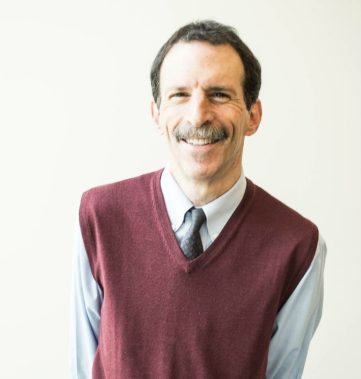This is the fifth and final article by Professor Brian Glassman on the 2020 General Election. This week’s theme is: “What’s Next: Redistricting and the Fight Against Gerrymandering.”
You can read more about Professor Glassman below.
Important Dates to Track:
10/30/20 – Early in-person voting in Georgia for the November 3, 2020 general election ends. For additional voting information, go to https://www.gcvoters.org/vote/
What’s Next: Redistricting and the Fight Against Gerrymandering.
Gerrymandering is as old as the United States itself.
Its name is drawn in part from one of its earliest practitioners: Elbridge Gerry of Massachusetts (U.S. Representative, Governor, Vice-President, and signer of the Declaration of Independence). It’s a method of drawing the geographical boundaries of voting districts so as to create the maximum political advantage of one party over another. Because gerrymandering distorts the principle of one person, one vote, it should be prohibited. But how?
A better understanding of how gerrymandering works will help to explain why it’s bad for our representative democracy. Gerrymandering is achieved using either/both of the following methods. First, the political party in control “packs” the opponent’s voters into as few voting districts as possible, so that the latter will win the smallest possible number of seats in a legislative body. Experts say that all of the votes beyond the necessary 51% to tip an election in favor of the victorious candidate are “wasted” votes. Second, the political party in control distributes the opponent’s voters across as many voting districts as possible, so that the latter will lose the largest possible number of seats in a legislative body. The objective is to have not more than 49% of the opponent’s voters in any voting district. Again, as the victorious candidate needs only 51% of the vote, all of those losing votes are “wasted.” This method is called “cracking.”
Packing and cracking can be used when drawing the maps for voting districts for seats in a state legislature or the U.S. House of Representatives. Often, the state legislature has the power to draw those maps – – rather than a non-partisan / bipartisan / independent redistricting commission. The result in state legislatures has been predictable. Rather than the ideal in a democracy – – the voters picking their representatives–it’s the opposite: the representatives picking their voters.
When a presidential election and decennial census coincide, as in 2020, the political consequences at the federal level are often significant, since so much is in play: the presidency; individual Senate and House seats, and party control of those two chambers. The census results will determine which states gain or lose seats in the House of Representatives, based on population shifts. That is reapportionment. After that, individual states will reshape their voting districts to comport with those population shifts, for purposes of electing their representatives to the U.S. House. That is redistricting.
Because gerrymandering gives incumbents access to the tools that will help ensure their re-election, it is anathema to our representative democracy. Put another way, protection of incumbency is not an appropriate prize for political victory. It prevents the best candidate from winning the next time around. Rather, the question should be: which candidate has the best ideas for creating policies that will advance our society?
If partisan gerrymandering has been around so long, why has it become such a bitter and loud political fight recently? Because the practitioners of gerrymandering have gotten much better at it lately, thanks to technological advances. Now, there are ever more sophisticated computer programs that can draw voting maps with surgical precision, to achieve the maximum political advantage. And with each victory, and each technological advance, the party in control can lock in its political advantage to an ever greater degree. Gerrymandering is now both a cause and an effect. Here’s one recent, prominent example of a system gone wrong: North Carolina voters are split roughly 50% – 50% between the two major political parties. But because of gerrymandering, the North Carolina delegation to the United States House of Representatives had 10 Republicans and only three Democrats. Sound fair?
The U.S. Supreme Court addressed one form of voting inequality in a series of cases beginning in 1962, with Baker v. Carr. There, the Court dealt with malapportionment, in which voting districts contained unequal numbers of persons. In that case, the Court rejected the argument that the drawing of voting districts presented a political question that could only be resolved through political processes. Rather, the Court said, constitutional rights were at stake, and the federal courts could take corrective action. These early cases were as much about the political differences between voters in urban and rural areas, as they were about the differences between Republicans and Democrats. By 1964, in Reynolds v. Sims, the Supreme Court expressly articulated the principle of one person, one vote, and required that all voting districts, whether used for electing state representatives and senators or U.S. Representatives, be of equal population size.
Those cases, decided in the 1960s, presented an easier problem than the gerrymandering cases that followed. It can be difficult to detect when partisan gerrymandering is occurring, or more precisely, whether it is occurring to an unconstitutional degree. Solutions in gerrymandering cases aren’t simple, but judges, including federal judges, are trained at drawing lines, and the rule was that federal courts could consider claims of partisan gerrymandering. But in 2019, in Common Cause v. Rucho, the Supreme Court reverted to the decades-old view that such cases present political questions, incapable of resolution by federal courts. As a result, plaintiffs must try to reshape voting districts by prevailing in state court lawsuits under ‘free and fair elections’ clauses in their state constitutions. The only other available path is the political process, but as explained above, it becomes ever more difficult to reverse the results of gerrymandering in that way.
The best hope for eliminating partisan gerrymandering may be independent redistricting commissions. Some states use them to draw their voting maps, and the results have been more balanced. But state legislators are loathe to give up their map drawing power, even when voters, by a referendum vote, have expressed their wish that an independent redistricting commission be given that authority. That was the case in Arizona recently, where the state legislature sued the redistricting commission, arguing that the referendum was an unconstitutional transfer of power to the commission. In 2015, the case reached the U.S. Supreme Court, which ruled in favor of voters’ right to transfer that power to a commission.
Our representative democracy depends on voter participation. When gerrymandering continues unchecked, voters might reasonably conclude that their votes don’t count, causing them not to exercise their right to vote. More simply, because gerrymandering reduces voter participation, it hurts all of us.
I want to end where I began Article 1: with the principle that a more robust democracy strengthens environmental protection. We need elected officials:
–who will choose long-term environmental sustainability over short-term financial gain;
–who will proactively manage the transition from 20th century energy sources to those renewable and clean energy sources of the 21st; and
–who will transform the above environmental policies into legislative and executive action.
This is where you can do your part. Advocate. Run for office. Make your views heard through the peaceful exercise of your First Amendment rights. And last but not least, vote!
Voting is the right that secures all other rights. As the U.S. Supreme Court wrote over 55 years ago in one of its landmark decisions, Wesberry v. Sanders (1964), “No right is more precious in a free country than that of having a voice in the election of those who make the laws under which, as good citizens, we must live. Other rights, even the most basic, are illusory if the right to vote is undermined.”

Brian Glassman
Professor, Cleveland-Marshall College of Law
Brian Glassman taught full time for 27 years at the Cleveland-Marshall College of Law before transitioning to part-time professor this year. He conceived of, organized, and moderated a conference, “Election Integrity in a Time of Political Polarization: Gerrymandering, Redistricting Commissions, and the 2020 Census Citizenship Question,” hosted by Cleveland-Marshall in October 2019. He also spoke at the Law Dean’s virtual Town Hall on “Elections, Coronavirus, and the 2020 Census” in April 2020. Currently, he is working on voting rights issues for organizations committed to free and fair elections. On September 24, 2020, he co-presented with Allegra Lawrence-Hardy, Esq., legal counsel for the voting rights organization Fair Fight Action, at a Cleveland-Marshall virtual event titled “Racial Discrimination in Voting.”
Prof. Glassman received his B.A. from Connecticut College, and his J.D. from the Boston University School of Law.
Final Note: GCV is grateful for the opportunity to collaborate with Professor Glassman on the Election articles, as well as the artwork by Liza Donnelly.
